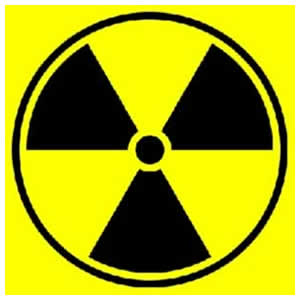There are a variety of types of nuclear accidents. This is a list of some of the main types.
Nuclear reactors are basically furnaces that using radioactive materials to generate heat to drive steam turbines. They require large amounts of cooling water to operate properly. Depending on the type of reactor, the coolant that carries heat away from the reactor core may be converted directly to steam or it may transfer heat through a heat exchanger to turn water to steam in a separate system. Then there is another separate system that cools the steam back to water. A coolant accident can cause serious problems for a nuclear reactor. If coolant is lost in the reactor core, there is danger of exposure of fuel rods and meltdown. Loss of coolant in the steam system can result in releaser of radioactive isotopes in escaping steam. And, finally, if there is insufficient water to cool the steam, then the reactor cannot function.
Nuclear reactors generate heat via a fission reaction. In order to maintain a steady output of energy, the fuel in the reactor core must achieve criticality or a self-sustaining fission reaction. The reaction must be controlled in order to prevent a runaway production of excess energy. Sometimes unintended criticality occurs in a fissile material in a reactor, a laboratory or a processing plant and this is called a criticality accident. This results in the expected and dangerous release of radioactivity.
When accidents cause damage to and/or exposure of the reactor core, the resulting excess heat from radioactive decay is called a decay heat accident. The heat can cause exposure and melting of the fuel elements, damage to the reactor machinery, generation of steam which can breach the containment vessel or generation of hydrogen which can explode and blow out the walls of the containment shell and the reactor building.
Radioactive fuels and research materials must be transported which can result in nuclear transportation accidents. Trucks can be in wrecks, ships can founder, railcars can jump tracks and planes can crash. These can be unintentional accidents or can be deliberately caused. If these vehicles are transporting nuclear materials, a release of radioactive isotopes into the environment can result threatening water supplies, animals, plants and civilian populations.
The design of nuclear reactors is still evolving. Either through poor design or accidents, equipment accidents can occur in nuclear power plants. Control systems can fail to moderate reactions in the core, sensors can fail to information operators of dangerous situation, valves can stick preventing coolant flow and automatic safety equipment can fail in critical situation. Software problems in control systems can also cause equipment accidents.
As with any system operated by human beings there can be human errors in dealing with nuclear reactors and radioactive materials. Operators can fail to perceived problems through lack of training or inattention. Operators can do the wrong things at critical times for the same reasons. Workers can fail to report problems or can actually work to conceal them. Management can falsify records in order to conceal problems, save money or avoid adverse publicity.
Radioactive materials can be lost, stolen or abandoned to become what is called an orphan source. If people who come across the orphan source do not realize that it contains radioactive material, they can be endangered by exposure.
Deliberate illegal trafficking in nuclear materials is not exactly an accident in the sense of the rest of these items but is included in the list because of its unpredictability and danger. There is a black market in nuclear materials where terrorists attempt to purchase radioactive materials in order to build a nuclear bomb or create a dirty bomb to scatter radioactive material over a large area.
A strong international effort to monitor the possession of, use, transport, handling and storage of nuclear materials is absolutely essential to the well being of the human race in the future.
